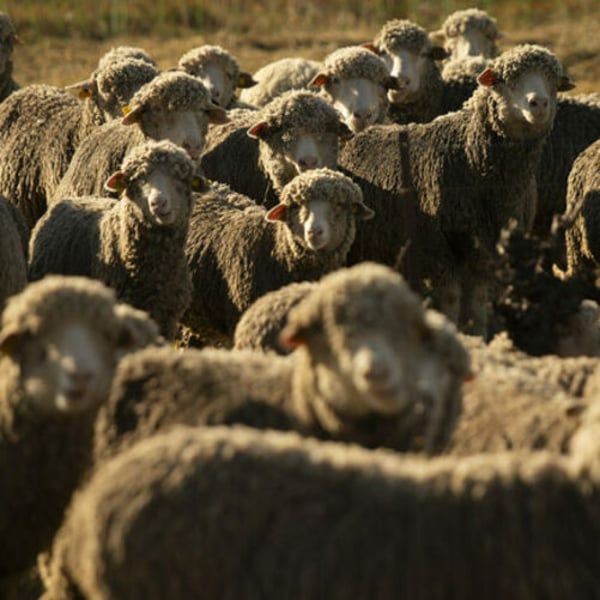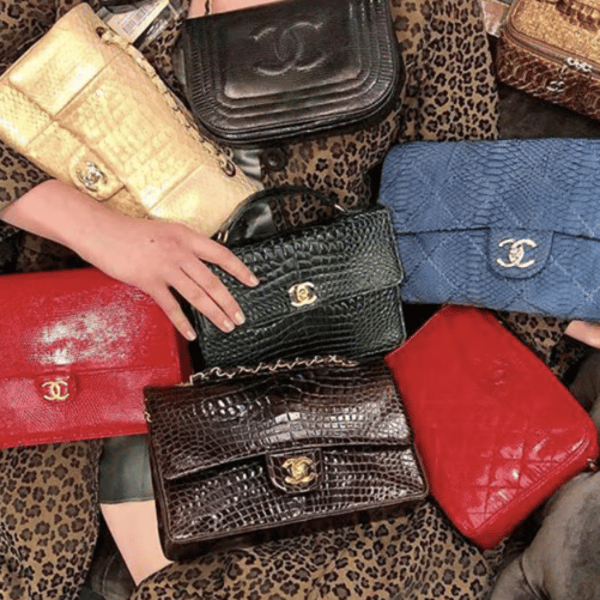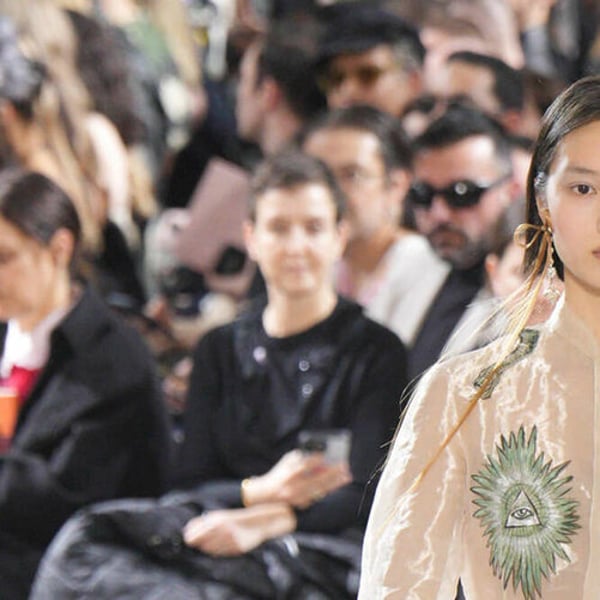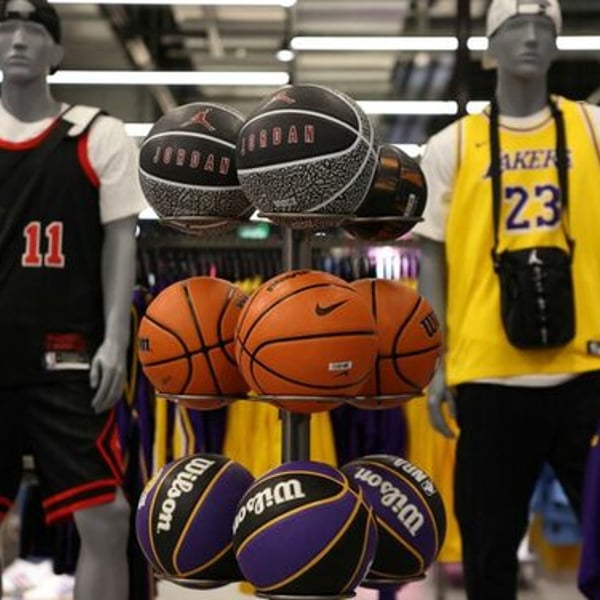Translated by
Nazia Bibi Keenoo
Published
August 1, 2025
Atelier Tuffery has constantly expanded, not only in sales, which grew 20% between 2023 and 2024 to reach € 4.6 million before taxes, but also in a purpose. Since he took over the family business in 2014, Julien Tuffery, the descendant of the fourth generation of the founder Célestin Tuffery, and his partner Myriam have focused on reinforcing French crafts and local production.
At the end of 2024, this approach led to the integration of two shepherds into the company and the purchase of 150 EWES Merino D'Arles, who gave birth to the lambs. After the first births of Cordero, Atelier Tuffery now has a 300 head flood. The company reaped the wool in spring, which will be incorporated into about 1,500 products in its autumn-winter 2025/26 collection. It seems an anachronistic choice in a fashion and textile world with a fragmented value chain, but that the company's administration has accepted.

For more than ten years, the couple has constantly expand their range of jeans, with a price of between € 100 and € 250, combining classic and contemporary silhouettes, and their local production. His Florac workshop soon became too small, and in 2022 the company invested € 2.5 million to structure its production and inaugurate a 2,000 square meters factory, open to the public.
By prioritizing communication production tools, Atelier Tuffery is betting on creating a buzz around the values of quality, social and environmental responsibility and proximity, with three quarters of their products made in their workshops. Despite a complicated consumption environment, the brand continues to grow. It has a raw operating profit margin of 10%, which allows it to launch a new emblematic project with the creation of its own flock of Merino sheep.
“It is a matter of consistency and sincerity. To explain the decision to buy our own sheep, I have to point out that we have embarked on a long trip. I think we sell a couple of pants not only because they are beautiful and well done, but also for the whole story behind. We have invested in tools, manufacturing, transmission and training. I cannot build everything we do in the manufacture of clothing, the transmission and transformation of the manufacturing. sovereignty of raw material. “
A mastered value chain
In the last ten years, the company has gradually worked on the value chain, initially ensuring its canvas suppliers, which claims to work with four weavers: the last TRN workshop bought four years ago, a workshop in Las Vosges, a family business in northern Italy and a Spanish denim manufacturer, Royo.
On the side of the knitted fabrics, the brand works with the French companies Malterre and Lemahieu. Even if, for pragmatic reasons, it retains a small proportion of its rank that incorporates 1.8% of Elastane, the company has also proposed to diversify the materials it uses.

In addition to cotton, Denim's emblematic material, the brand exploits and energizes the supply chains of other French resources (which also allow it to claim a carbon impact three times lower than that of other jeans in the market), such as linen, hemp and wool. During the last ten years, the company has been working with Merino sheep breeders in southern France to add value to the French wool, and claims to have recovered 15 tons of wool by 2024. This approach has allowed the company to affirm that 20% of its sales are now generated by products whose cotton has been replaced by biofibers of local origin.
By 2025, Atelier Tuffery will have taken another step towards the development of products for which he controls the entire value chain, from agropastoralism to sales in his workshop and store in Montpellier.
“The wool project was very close to our hearts because it comes from our region, which is classified as a Unesco world heritage site for its sub-mediterranean agropaProperalism. For hundreds of years, the flocks of transhumant sheep have shaped these territories. When we want to build a common sense squrains, even producers adapt to the territory. The development of globalized cotton and synthetic materials.
The company has structured its wool processing chain collected in Lozère. Then Sologne was washed in Laurent Laine, before being combed in Dumortier in Tourcoing. Next, the material is sent to the Dreuilhe Fileness in Ariège, before being sent to Autan's fabrics, and finally to the Tombs Factory in Florec, where the garments are made. After collecting about 15 tons last year with its partners, the brand aims to maintain this crop of Lacaune wool and add about two tons of its own production of Merina wool in three years.
“Finally we are beginning to reach the heart of why I believe in reindustrialization: to achieve the volumes that allow us to have logical industrial operations. But we have had to work hard, because we have to sell them. Integrating our own wool is the last stage of the rocket. Having our own merina merina gives us a very clear vision of wool quality. And we are sure that this will be distributed throughout the region.”
A strategy rooted in agropaPrasoralismo
For Julien Tuffery, the choice to build this flock is a defense of agropastoralism, with animals that live freely throughout the year and, therefore, are more resistant to the disease, eliminating the Hérault vineyards in winter and ascending through the Mediterranean Guariguos to Lozère's plateaus in the summer. Like its production, this flock reinforces the terroir image of the brand. But the integration of this activity is also based on the company's need to ensure its supplies.
“This project has very substantial costs, but we could not carry it out without integrating it. These sheep meet our daily needs, because we are more than a jeans brand. We are a local player. We are able to finance it because it is part of the general economy of the company, with a logic of” brand that makes, the brand it sells “, today, we do it with our financial strength, we can say that in twenty years, we will sell it. Design tomorrow's business models, “says the entrepreneur. “We were quite traumatized by what happened to the bedding. Linen sarga fabrics are now sold to € 35 per meter, excluding taxes. It is complicated because Asian countries are advancing us. If we can avoid this scenario with wool, much better.”
A product with “a story to tell”
The CEO admits an obsession to master its business model, take the time to build and consolidate the different strata of its project. He focuses on profitable growth, making sure to gradually increase his production capacity to meet the demand for his electronic commerce site, in his factory and in the Montpellier boutique he opened last year.

“We prosper in digital, but we perform better physically because our experience in person aligns more with who we are: an excellence of products to play, a solid story to tell. But we do not make any commercial decision that can damage our values. Before developing a network of boutiques, we must be sure that we have the products to sell in those boutiques. You need factories and provide civil A commercial time, at a time when we accelerate, in a time.
This approach to profitability is supported by a vision of financial autonomy to boost long -term transformation. With this in mind, Julien Tuffery admits that for the moment, he is not considering developing wholesale sales, since the margins of the resellers today do not allow him to keep prices in line with the market, in his opinion.
“That would mean a retail price of less than € 40,” he says. “At this time, at € 40, I have made half a couple of pants. I do not want to change our model. In 1983, my father went from 60 to three people in a village of 2,000 inhabitants, because the great retailers went to North Africa during the night. We have learned a lesson of this and a great humility about development.”
On the other hand, Atelier Tuffery is looking towards the future. Its industrial model is designed to double in other regions, with sites that are “hyperhuman, hyperhagile, hypercompetent, hyperversatile” and capable of responding quickly to local needs. But the next important step will be commercial. The brand feels ready to open new stores under its own name.
Copyright © 2025 Fashionnetwork.com All rights reserved.

